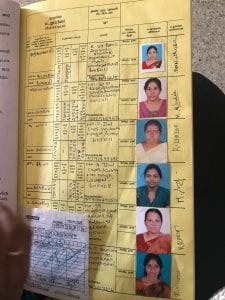An interview with Mr Arasu, the founder of India Volunteer Care, was very important in enlarging my understanding of the depths behind the tool that is microfinance. Whilst all of his answers were provided in great detail, one that stood out to me was what he thought were the primary obstacles that women using microfinance faced. There were two parts to the response provided to the one question, as given below:
“Sometimes, her spouse may take money from her and put her into trouble of borrowing [from money lenders]”. I think there is a lot to be learnt and understood in this one sentence. Firstly, it speaks to the everlasting presence of the patriarchy subjugating women to the control of men, who impose their will on the decisions and actions of women. I think this is one of the chief deterrents to the success of microfinance to achieve one of its aims of female empowerment. It shows that even though there may be the opportunity for women to thrive and earn respect in their community, social factors that play a great role in the way in which women behave or can behave, inhibit the human or personal development of women. In the context of analysing the effectiveness of microfinance as a tool of female empowerment, it represents one of the aspects that I will have to take into consideration, particularly in the cultural and social backdrop of India. Furthermore, Mr Arasu’s answer also reveals to me about the scope for exploitation of microfinance in India, something I was completely unaware about until now. This may be attributable to the fact that no fraudulent organisation candidly reveals their schemes on their website or to the women who may have to use them. This is always why my active engagement was so important in revealing the intricacies that go on in Pondicherry, with regards to microfinance, that may not necessarily be explicit online. This form of exploitation takes away from the goal of female empowerment by converting microfinance into a service for profitability.
“Often being uneducated, a woman may not know how to use the money for the purpose for which it was offered. She may use the money for her own domestic needs”. This is a common problem that I have previously identified through reading online reports or assessments of microfinance. I think this reveals one of the most important factors that are into play while determining the success of microfinance: education. Given that it is rational to assume that many impoverished women, who have likely not received sufficient education in their past, are the main users of microfinance schemes, it must be analysed just to what extent this lack of education has one the success levels of the businesses run by the women, and their subsequence empowerment. As such, I also learn about the importance of banks/NGOs in facilitating regular checks, in order to ensure that the women use the money to generate long-term, sustainable income, which cannot be attained if it is spent on domestic needs for example.
Here is a photo of the founder, Mr Arasu, and I on my final day, where they gifted me the scarf and handed me my certificate for volunteering with their programs.





